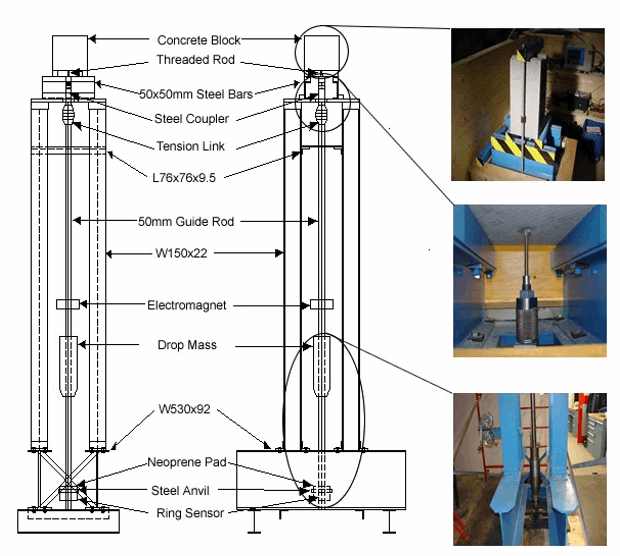A. Braimah1, E. Contestabile2, and R. Guilbeault3
- Blast Hazard Engineer, CERL, Natural Resources Canada, 555 Booth Street, Ottawa, Ontario, K1A 0G1, abraimah@nrcan.gc.ca
- Head, Explosives Applications, CERL, Natural Resources Canada, 555 Booth Street, Ottawa, Ontario, K1A 0G1, econtest@nrcan.gc.ca
- Explosives Technologist, CERL, Natural Resources Canada, 555 Booth Street, Ottawa, Ontario, K1A 0G1, rguilbea@nrcan.gc.ca
ABSTRACT
The Oklahoma City bombing and World Trade Centre attacks have alerted governments worldwide to the recurrent problems of terrorism. Research has shown that annealed glass breaks into high velocity shards (“knives and daggers”), which cause most of the injuries sustained during a blast explosion event.
Currently, building owners with property in high-risk areas upgrade exterior windows with an anti-shatter film. Anti-shatter films possess high strength and deformation capacities and prevent glass breakage into shards. When film is installed as a “daylight” application, glass breaks into one unit held together by the film while in the wet-glaze or mechanically anchored applications, where the film is anchored to the window frame, blast loads are transferred to the façade backup structure through the window frames.
In order to securely fasten window frames to the exterior façade, chemically bonded adhesive anchors are proposed. The behaviour of adhesive anchors in masonry is, however, not very well documented, while their dynamic behaviour to impulse type loading is totally lacking.
An experimental program designed to study the behaviour of adhesive anchors embedded in masonry has been completed. The adhesive anchors were exposed to impulse-type loading in a specially designed drop-mass loading frame. The anchors were tested in pure tension and combined tension – shear configurations in single masonry units.
The test results show that hollow clay brick is too brittle for use in blast-mitigation applications with a dynamic load factor of 0.6. Concrete masonry block showed a marginal increase in capacity under impulse type loading. Dynamic load factors of 1.0 and 1.1 are recommended for the design of adhesive anchors with normal and 45o concrete block penetration, respectively.
KEYWORDS: Blast Mitigation, Explosion, Impulse Load, Anchors, Anti-shatter film.
1b-2



